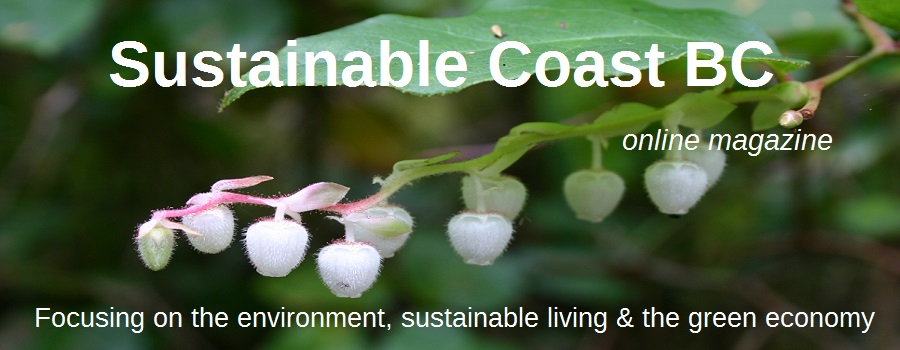News
The Friends of Davie Bay (FODB) have asked for a judicial review of the BC Environmental Assessment Office’s decision that an environmental assessment is not required for the proposed Texada South Quarry at Davie Bay on Texada Island.
Mining giant Lehigh Hanson plans to open a 74.6 hectare limestone quarry with mining reserves greater than 100 million metric tonnes. A loading ramp is to be built over Davie Bay with a loading capacity of 2,500 tonnes per hour. However Lehigh says in its application that it estimates production of just 240,000 tonnes per year. An environmental assessment would automatically be required if production were estimated to exceed 250,000 tonnes per year.
Friends of Davie Bay will argue that BC’s Environmental Assessment Office has incorrectly interpreted the regulation that would trigger an environmental assessment by relying solely on Lehigh’s estimated production rate of 240,000 tonnes per year. Today’s filing seeks a court order declaring that the Reviewable Project Regulation, B.C. Reg. 370/2002, Part 3, Table 6 requires an environmental assessment when the infrastructure of the project could produce more than the defined capacity of 250,000 tonnes per year.
[blockquote]“A quarry in the Davie Bay area would devastate a unique area of forest, open grassy bluffs, limestone caves and streams and waterfalls, and the fragile marine habitat,” says Island resident John Dove. “This should not happen without a detailed examination of the social, economic and environmental consequences, with full public input.”[/blockquote]
Davie Bay Backgrounder
In May 2009 Lehigh Hanson applied for permits to open a substantial limestone quarry on Crown land mining 75.6 hectares with total mineable reserves greater than 100 million metric tonnes. A loading ramp is to be built over Davie Bay with a loading capacity of 2,500 tonnes per hour. However Lehigh estimates a production of just 240,000 tonnes per year, which would give the mine a life of over 400 years.
Friends of Davie Bay’s position is that BC’s Environmental Assessment Office has incorrectly interpreted the regulation that would trigger an environmental assessment of the Texada South Quarry by relying solely on Lehigh’s estimated production rate of 240,000 tonnes per year. Friends of Davie Bay is seeking a court order declaring that the Reviewable Project Regulation, B.C. Reg. 370/2002, (the “RPR”) Part 3, Table 6 requires an environmental assessment for a new construction stone and industrial mineral quarry when the infrastructure, equipment and operational plan of a proposed project indicates that the project will have the ability to produce an output that exceeds the defined capacity of 250,000 tonnes per annum.
Friends of Davie Bay have long said the economic opportunity cost of the proposed Texada South Quarry is too high. Existing quarries on Texada are located on the north of the island, but to the south it is still largely a beautiful natural wilderness. A new quarry in the south, in an area of exceptional natural beauty, would threaten the growth of recreation and tourism and the development of a sustainable, more diverse economy on Texada Island.
Friends of Davie Bay are requesting the Court for an order quashing any licenses, leases, permits or other types of authorizations provided to Lehigh Hanson Materials Ltd. for the proposed Texada South quarry, the approval of which should have been subject to an environmental assessment under the Environmental Assessment Act, S.B.C. 2002 c. 43 (“the EAA”).
Other issues
Caves and karst
The karst cave system in the Davie Bay area has been identified by experts in the field as the most extensive and well decorated of all known karst caves along the BC mainland coast. “A full and proper cave and karst assessment using dye-tracing techniques is required to determine what risks the Texada South Quarry may have on the karst system and what the resulting environmental impact could be,” says Texada Island resident James Mack. “This is too valuable a resource to destroy before careful study.”
Rockfish protection
Davie Bay is the centre of a Rockfish Conservation Area, a no-fishing zone set up to protect a variety of rockfish species which, according to Department of Fisheries and Oceans, are at low levels of abundance, especially within the inland waters of Vancouver Island. (http://www.pac.dfo-mpo.gc.ca/fm-gp/rec/restricted-restreint/rca-acs-eng.htm) This barge-loading facility would be the first industrial development permitted inside a Rockfish Conservation Area.
Greenspace
Recently, the importance of the Davie Bay area, including the foreshore and inland karst system was recognized in the Powell River Regional District’s Parks and Greenspace Plan which was prepared by HB Lanarc, a planning and design firm, at the request of the Powell River Regional District. The plan is intended to provide the foundation of the parks and greenspace system that will address the long-term needs and interest of the region.
Recreation
There is a provincially designated Use, Recreation and Enjoyment of the Public (UREP) site at the north end of the Bay, used by Islanders and visitors for activities ranging from hunting camps to solstice celebrations. There is also a substantial campsite in the Bay.
This article is a press release from the Friends of Davie Bay. For more information, visit the FODB website.
